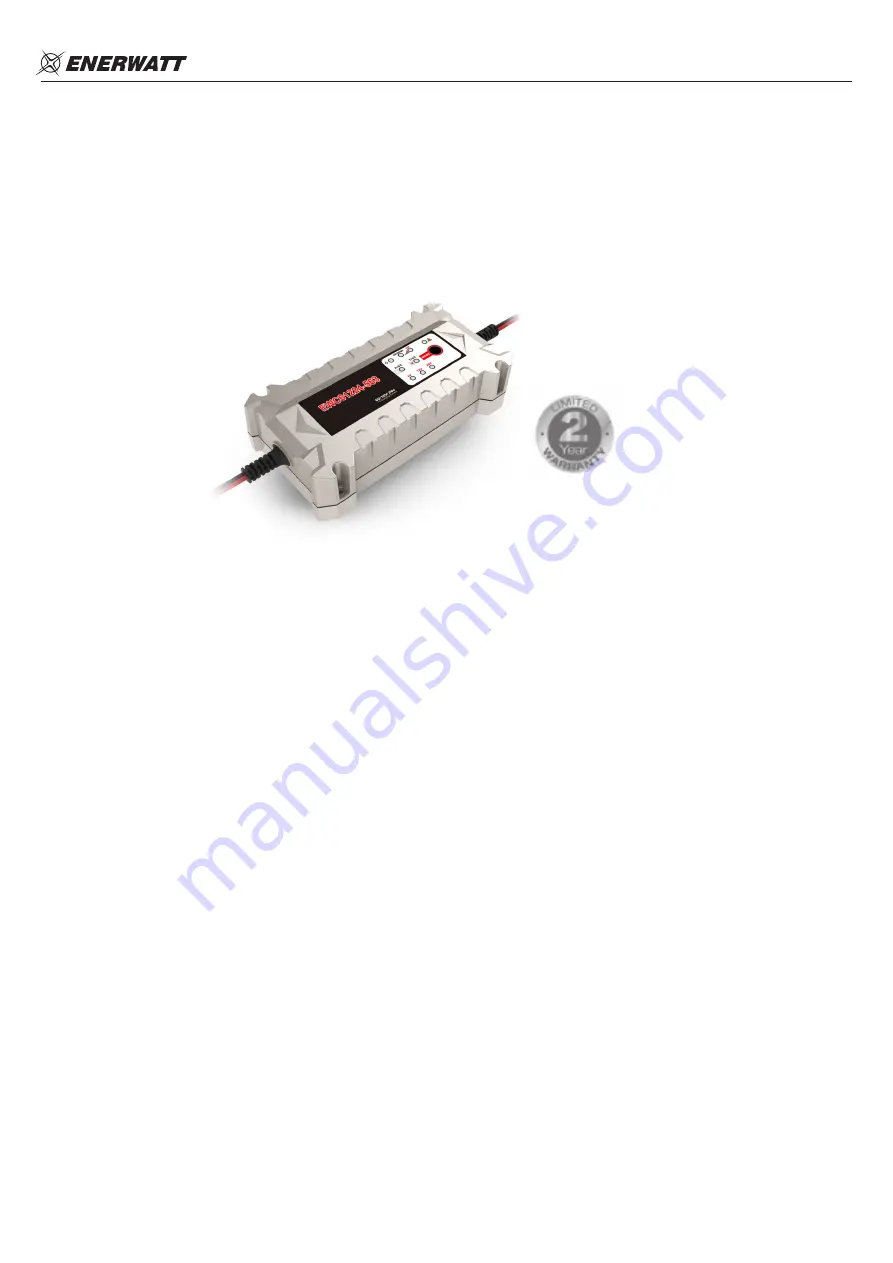
7
MODEL: EWC61224-563
USER’S MANUAL
BATTERY CHARGER USER GUIDE
MODEL: EWC61224-563
AC Input: 110-120VAC, 50-60Hz, 2.0A
DC Output: 5A at 6V
6A at 12V
3A at 24V, Temperature controlled
Please read and ensure you understand all important safety and operating instructions before using this charger.
In addition, please read and follow the battery and vehicle manufacturers’ instructions and cautionary markings.
IMPORTANT SAFETY INSTRUCTIONS
SAFETY PRECAUTIONS FOR WORKING IN THE VICINITY OF A BATTERY
1. Batteries generate explosive gases during normal operation. Use in well-ventilated areas.
2. Consider having someone close enough or within hearing distance to come to your aid, should you require it,
when you work near a battery.
3. Do NOT smoke, strike a match, or cause a spark in the vicinity of a battery or engine. Avoid explosive gases, flames and sparks.
4. Remove all personal jewelry, such as rings, bracelets, necklaces and watches when working with a vehicle battery.
These items may produce a short-circuit that may cause severe burns.
5. Be extra cautious to reduce the risk of dropping a metal tool on the battery. It might spark or short-circuit a battery
or other electrical hardware, which may cause an explosion or fire.
6. Wear complete eye, hand and clothing protection. Avoid touching eyes while working near a battery.
7. Study the battery manufacturer’s specific precautions such as removing or not removing cell caps while charging
and recommended rates of charge.
8. Clean battery terminals before connecting to a charger. Be careful to prevent corrosion from coming in contact with your eyes.
9. For a battery installed in a vehicle, start by connecting the charger output lead to an ungrounded battery post – and not the
vehicle’s chassis - in accordance with polarity identification. Then connect the opposite polarity lead to the chassis;
do not connect to the carburetor or fuel lines. Disconnect the chassis lead first.
10. When it is necessary to remove a battery from a vehicle to charge it, always remove the grounded terminal
from the battery first. Make sure all accessories in the vehicle are turned off in order to prevent an arc.
11. It is not intended to supply power to an extra-low voltage electrical system or to charge dry-cell batteries.
Charging dry-cell batteries may burst and cause injury to persons and property.
12. NEVER charge a frozen, damaged, leaking or non-rechargeable battery.
13. If battery electrolyte comes into contact with skin or clothing, wash it immediately with soap and water.
If electrolyte enters the eye, immediately rinse the eye throroughly with running clean cold water for at least 15 minutes
and get medical attention immediately. If the electrolyte is consumed, drink large quantities of water or milk;
do NOT induce vomiting and get prompt medical attention. Neutralize any electrolyte that spills on a vehicle
or in the work area with baking soda; after neutralizing, rinse the contaminated area with water.






























